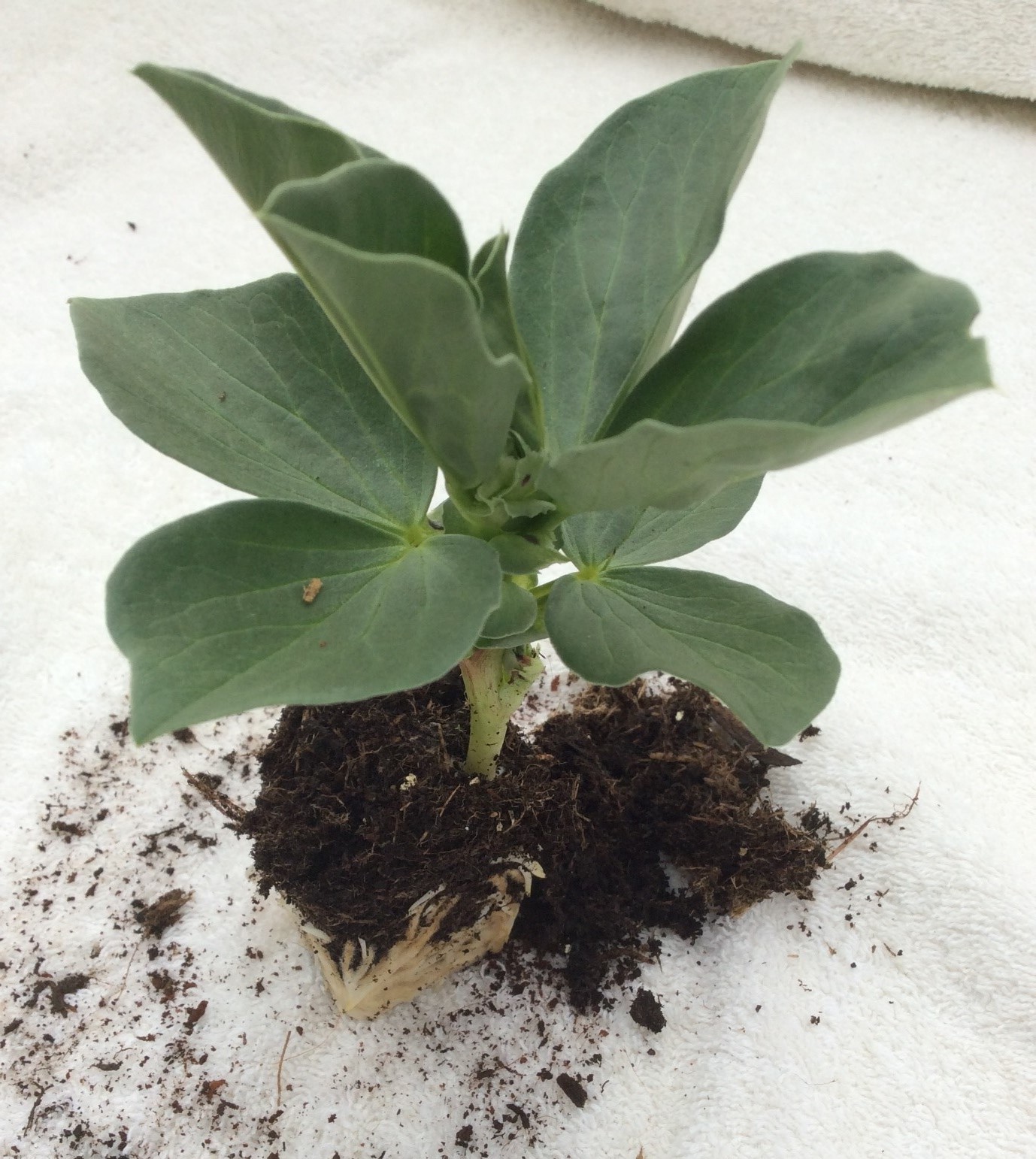
Broad beans are one of the earliest crops of the year. It is worth planting a batch 2 or 3 weeks after the first planting, to extend the season.
Before planting the broad beans they must be hardened off (toughened up). Put them outside for a couple of hours, and then gradually increase the length of time they are outside each day, so that by the end of the week they are out all day. The beans should now be acclimatised to the conditions outdoors and they will be ready to plant.
Broad beans are incredibly tough and can stand some frost. But to be on the safe side watch the weather forecast and, once planted, protect the beans at night if frost is expected. Cover the beans with cloches or a tent held up by canes or stakes. Use horticultural fleece, bubble wrap or polythene to cover the tent. Weigh down the side edges to prevent the wind blowing the material away. Warm air will then be trapped under the tent which will keep the beans frost free. Remove the covers in the morning.
The day before planting, water the tray of plants well, so that the compost is soaked. This will keep the root ball together so that the compost does not fall off when the plant comes out of the pot.
Prepare the ground for planting by drawing a straight line with a stick, in the soil, to mark out the row. Then at the end of the row, with a trowel, dig a planting hole the size of the pot which will be equivalent to the size of the root ball.
Gently take the plant out of the pot by putting your finger and thumb around the stem of a broad bean plant and tipping it upside down. Place the plant in the hole being careful not to damage the roots. Lightly press the soil in around the root ball so that the bean is firmly planted.
Continue planting down the row, spacing the broad bean plants 25cm apart in the row. The rows should be about 25cm apart.
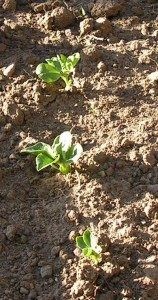
Water well when planting is done.
Remove weeds as soon as they appear. It is easy to pull out tiny weeds with your fingers.
Support tall varieties of broad beans
When the broad beans are about 30cm tall it is worth introducing some support by putting string around the broad beans and tying the string to a stake. Otherwise as they grow taller they are likely to fall over in heavy rain or wind.
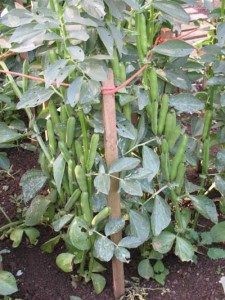
The broad bean plants become quite heavy, particularly when wet from rain, so it is worth supporting them to stop them falling over.
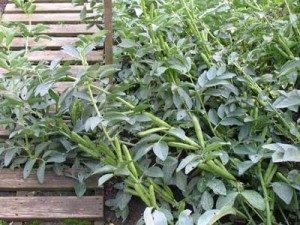
If the plant blows over it ‘lodges’ with other broad bean plants and will not grow or fill with good sized broad beans.
The dwarf and bush varieties should not need staking.
Pinch out tops of broad beans
When the first bean pods form at the bottom of the plant, pinch out the tip of the plant. This deters blackfly.
To pinch out the tops:
Select a broad bean plant and find the growing tip at the top. Hold the tip between finger and thumb and pinch the top so that it breaks away from the plant. Use this tip as a vegetable or put it in an omelette!
Watch this video to see how to pinch out broad bean tops:
When to harvest broad beans
The pods will be ready to pick when they are swollen and you can feel the individual beans. The beans should be soft not hard. It is better to harvest them too soon than leave them until they are past their best (bean has a black edge). So pick one and have a look inside the pod.
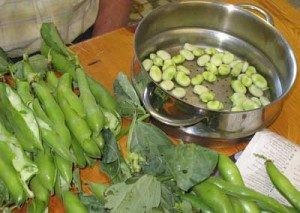
The bottom pods will ripen first but are difficult to see, so make sure you keep checking down below, at the base of the stalks.
Cook and eat the individual beans. So pull the pods off the stems, taking care not to damage the stem, and then split the pod by squeezing it, and scrape out the beans.
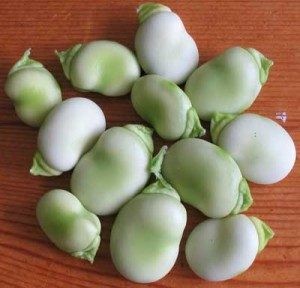
Mon - Fri 8:00am - 5:00pm
Sat & Sun 9:00am - 5:00pm
Any questions? Email us or give us a call on 01904 400092.